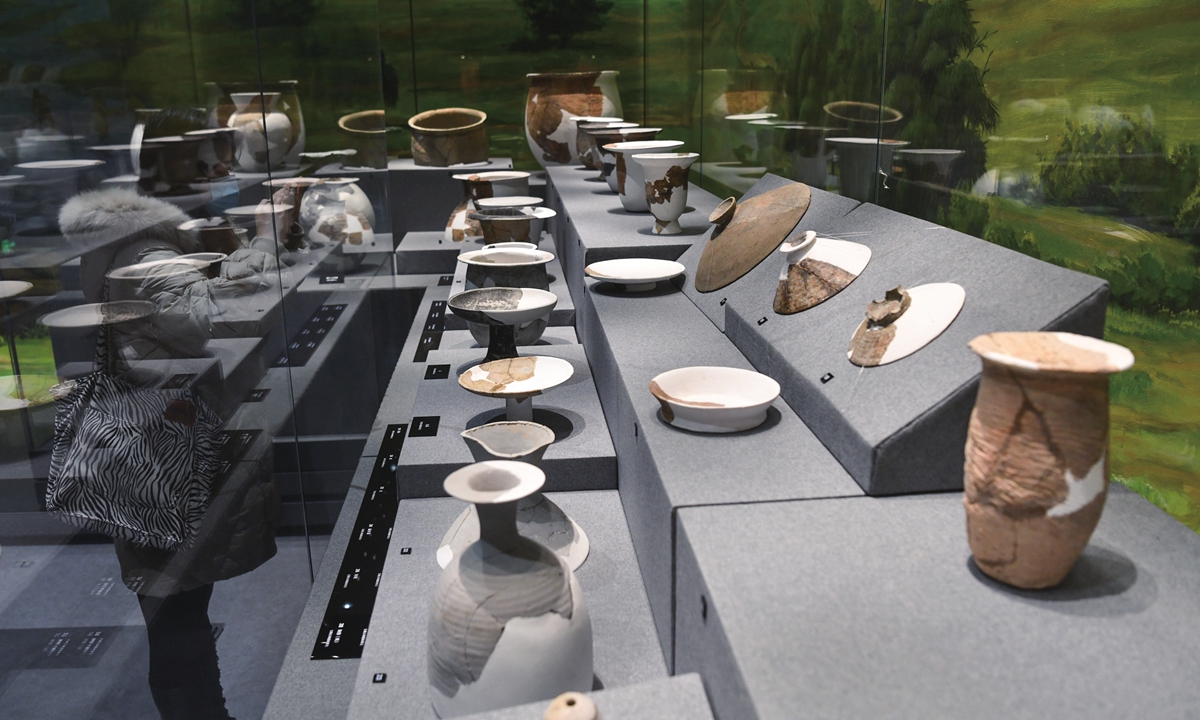
Pottery relics at the Baodun Culture exhibition in Chengdu, Sichuan Province Photo: IC
Baodun City Ruins: Origin of the world-renowned Sanxingdui Culture In 2013, an unusual tomb from the Baodun Culture dating back to more than 4,500 years ago was discovered in Hongqiao village in Chengdu, Sichuan Province. The body of a man about 1.6 meters tall and in his 30s was lying in the tomb. Next to him was a 1.04-meter-long ivory scepter. Who might he be? Was he the legendary King of Shu from the ancient Shu Kingdom or a leader of an ancient tribe? The identity of the man is still up in the air today.
Stories concerning the Baodun Culture, located in the Chengdu Plain, date back to 4,500 to 3,700 years ago. Scholars believe that the culture is somehow related to the later well-known Sanxingdui Culture, while many think it is in fact the origin to the latter.
The Baodun City Ruins are the largest as well as the earliest pre-historic city ruins found on the Chengdu Plain.
In 1995 and 1996, archaeologists headed to Baodun, where they excavated representative relics such as pottery jars with rope patterns. Similar jar relics had also been found previously in the Sanxingdui Ruins. This similarity led to the theory that the early Sanxingdui Culture was part of Baodun Culture before the latter completely disappeared and the Sanxingdui formed with its own characteristics.
"If we see Sanxingdui as a tree, the Baodun Culture would be its nutritious soil. We have found 17 similarities between the two cultures. Those similarities can be seen on the patterns of pottery, tools and even in the construction of the city wall," Tang Miao, head of the Baodun City Ruins archaeological team, told local media earlier in 2022.
"In addition, the use of scepters also shows the inheritance of both cultures.
When a golden scepter was found in the Sanxingdui Ruins, many scholars assumed that it was an influence from ancient Egypt, but in fact scepters had already been used in Baodun times [as a show of privileges,]" Tang added.
The remains of crops such as rice and millet, domesticated livestock like pigs and dogs were also unearthed at Baodun, laying the foundation for mature agriculture during the latter Sanxingdui Culture in Sichuan.
Global Times




